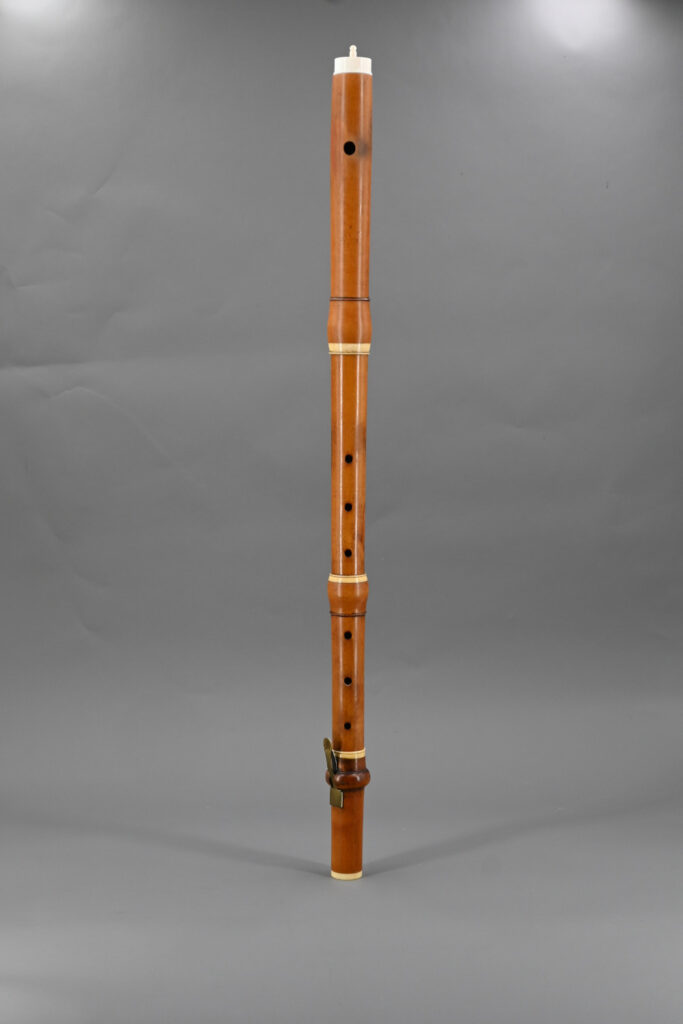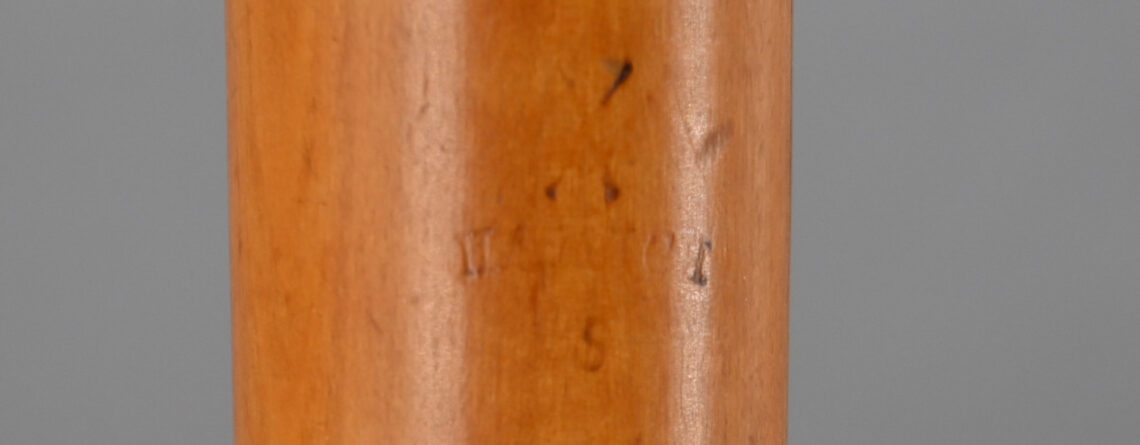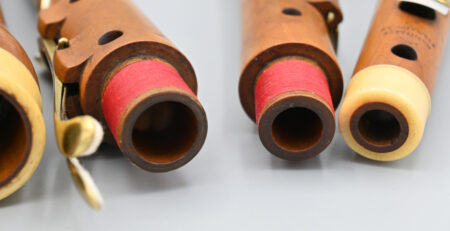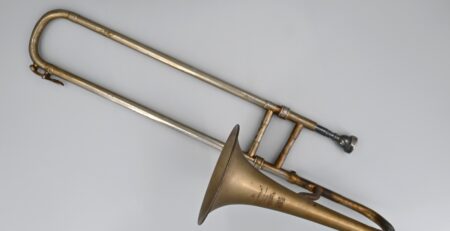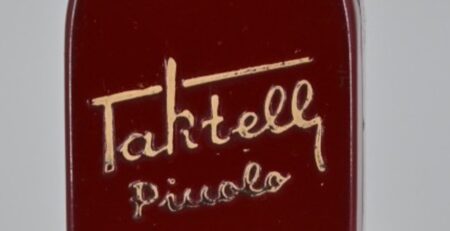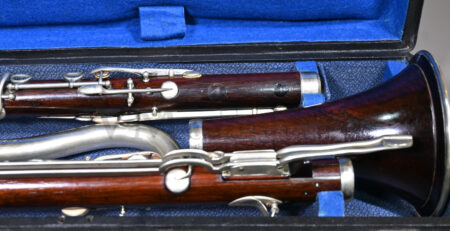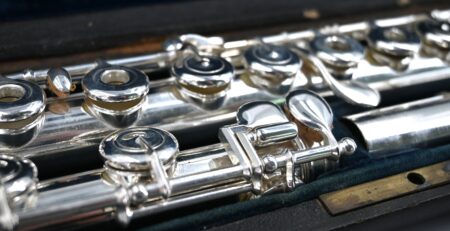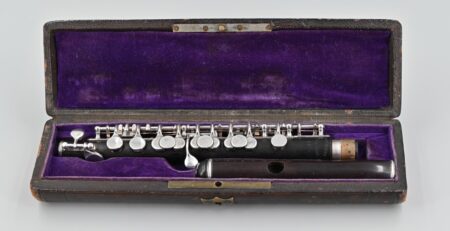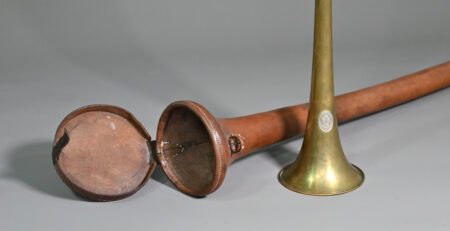Flute – HAMICH
This elegant, German, Boxwood flute has ivory rings and a single brass key. We can date it to the late eighteenth century… perhaps around 1780. It was made by HAMICH. But who was HAMICH?
A trawl through the New Langwill Index gives us quite a few matches… but it’s all rather confusing. There is of course the famous woodwind instrument-making dynasty the HAMMIGs. The name seems to change between HAMICH, HAMMIG and HAMMICH over time. In old German, a straight line above a letter can mean there should be two of them (mm). From among them all, it appears that one brother, Christian Gottlob Hammig (1759-1836) started making woodwind instruments, including traversos, piccolos, oboes and clarinets. Another brother, Friedrich Hammig, set up his business in Vienna. The Vienna HAMMIGs tended to stamp WIEN and a Hapsburg eagle on their instruments… so no luck there.
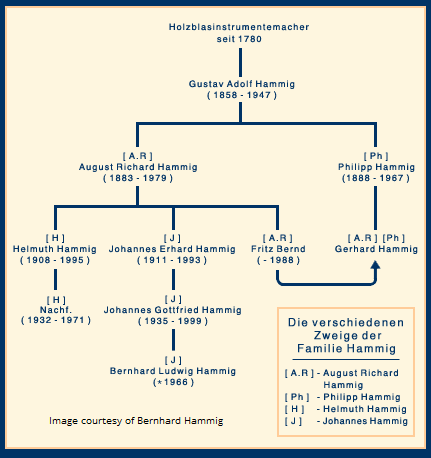
Could this be a flute by Christian Gottlob Hammig? The stamp itself is only on the head joint. It is difficult to read but includes crossed swords, called Kurschwerter in German. This is a typical mark from Saxony [like Meissen porcelain, for example]. But, almost identical to the marks of Karl August GRENSER (1720-1807)… A similar marked flute in E-flat by HAMICH can be found in the Klingenden Museum in Bern, but it also features the mark of a star and is made later. There is also a very similar style flute (MIR 293) in the collection of the Germanisches National Museum in Nuremberg, Germany. Its construction is similar and is dated from 1785. However, its condition is poorer in comparison to the one on offer here. One of the middle joints is made by GRENSER.
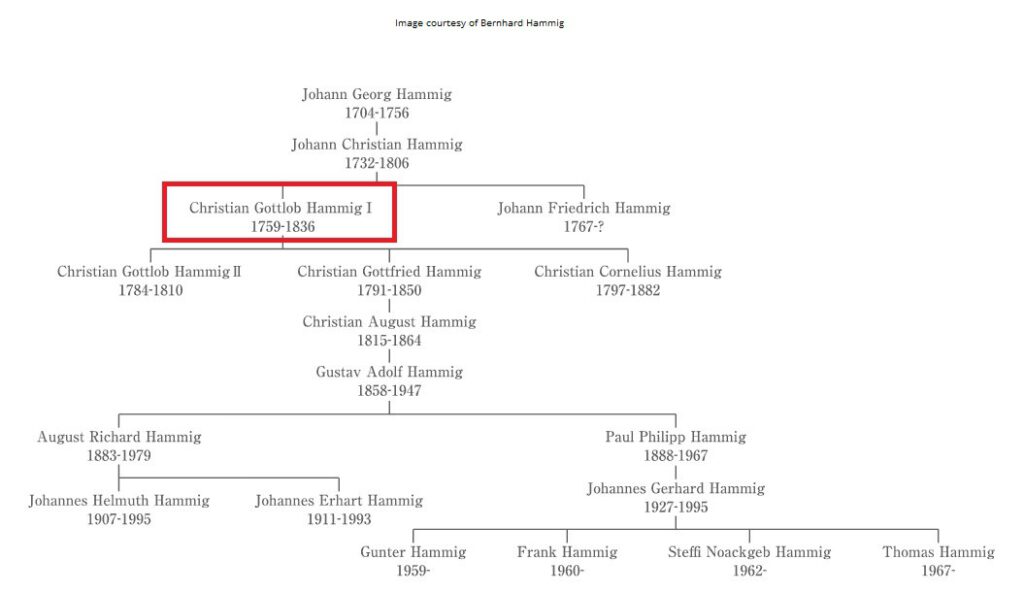
The instrument itself is beautifully made and there some clues about its age. Although the cap is not original, the embouchure seems untouched. The embouchure is traditionally rounder than oval-shaped. The double profiles on the rings are nicely carved and often found on instruments from that period. The form of the key is fitting with the time. The spring is actually mounted in the wood! This was an early way of making the key mechanism.
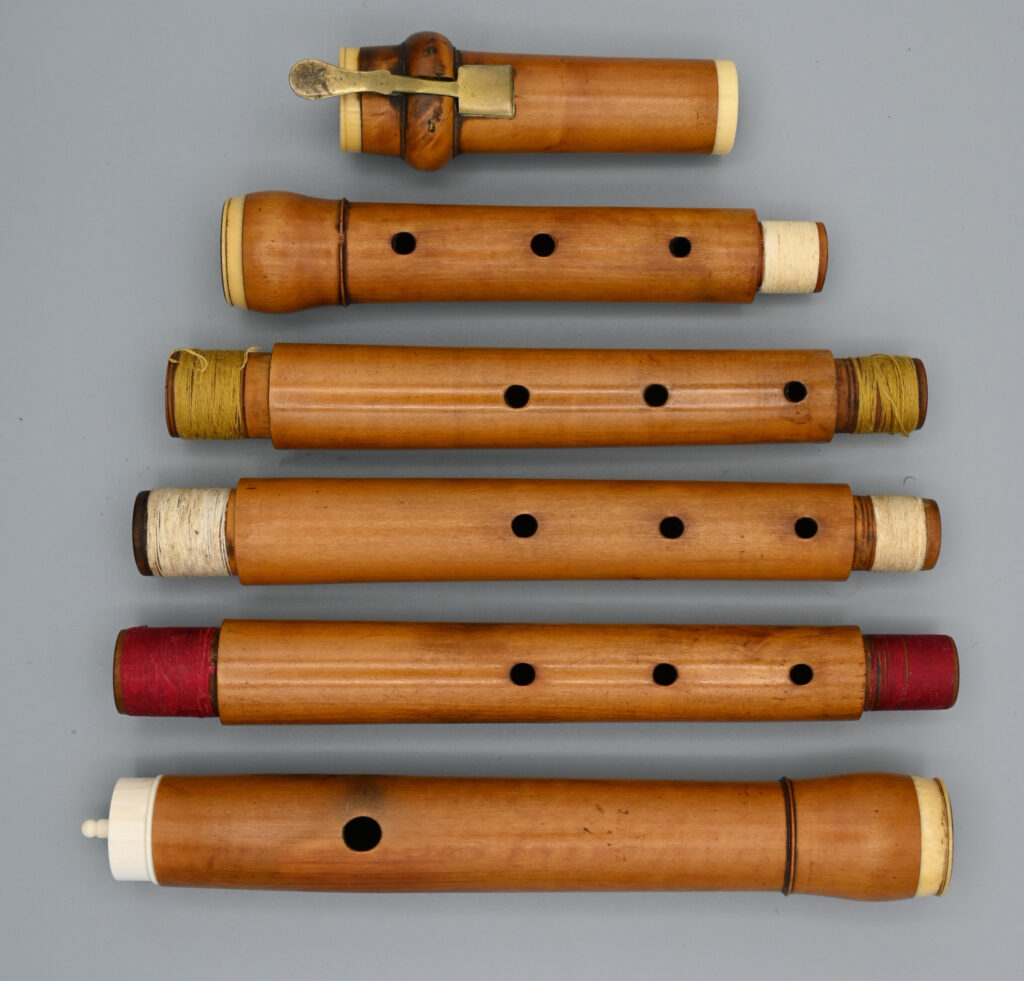
The boxwood has acquired a lovely honey colour over time. There are no cracks visible. It plays very nicely indeed. The pitch is around a=430 Hz with the longest middle joint, a=435 Hz, with the middle and a=442 Hz with the shortest.
